2nd degree osteochondrosis of the cervical spine requires professional treatment. With the development of this pathology, the integrity of the intervertebral discs is disrupted, and the gap between them also decreases. Of all forms of osteochondrosis, the cervical spine is the most common. The neck is mobile, in this respect it is regularly stressed. The initial stage of osteochondrosis is usually tolerated. Started - poses a great threat to health.
Why does osteochondrosis of the cervical spine occur?
The causes of cervical osteochondrosis are numerous. Pathology can develop in people who lead a sedentary lifestyle. Veins run through the vertebrae in the neck region and supply blood to the vessels in the brain. Osteochondrosis SHOP often occurs due to increased stress on the neck. Grade 1 spinal osteochondrosis occurs in both young and old. It is not age that is important, but lifestyle and body characteristics.
Grade 2 cervical osteochondrosis is common in adolescents. In medicine, there is the concept of "youth osteochondrosis". A common cause of 1. 2 degree osteochondrosis is the incorrect position of the head. As this disease develops, the pulp ruptures. The types of osteochondrosis depend on howThe pulp rupture is severe. Premature treatment of first degree osteochondrosis leads to the progression of the pathological process. In the third stage of the disease, degenerative-dystrophic processes are pronounced: the patient is more often concerned about back and neck pain.
Features of the first stage
With osteochondrosis of the cervical spine of the 1st degree, the pathological process extends to the muscles. The initial stage is characterized by the formation of cracks in the annulus fibrosus. It is made up of collagen fibers.
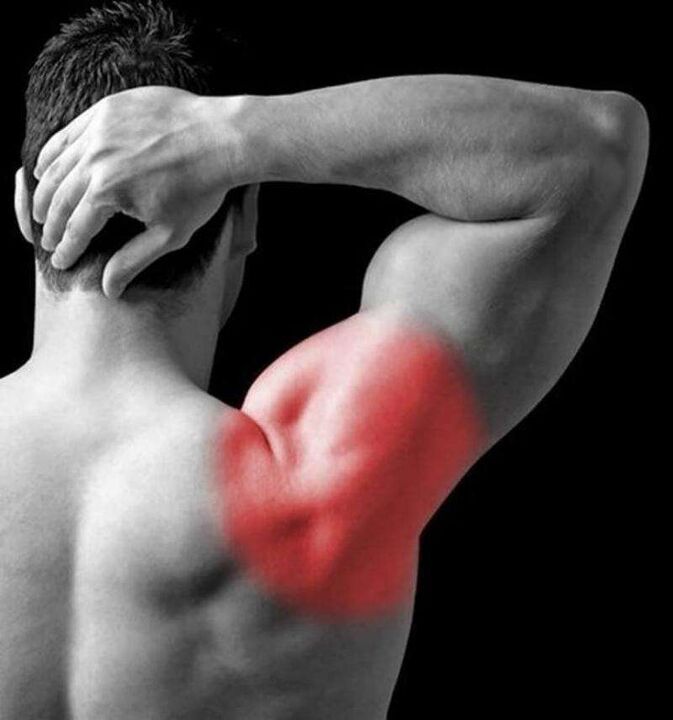
1st degree osteochondrosis of the cervical spine leads to the appearance of unpleasant symptoms:
- The first stage of osteochondrosis is manifested by pain in the back of the head. Some people get swelling. Severe cramps can occur in degree 1 cervical osteochondrosis.
- If a person is diagnosed with osteochondrosis of the cervical spine, they need to see an ophthalmologist. The pupils can be dilated.
- Grade 1 cervical osteochondrosis often leads to Wright's syndrome. If the patient puts his hand behind his head, the pain increases.
- Cervicalgia syndrome usually develops at the onset of the disease. The inflammation in this case affects the muscles. The progression of cervicalgia syndrome is associated with an abscess. A person begins to experience pain in the neck, the mobility of the joints is limited.
- In the first stage, an anterior scalene muscle syndrome, which affects the subclavian artery, can occur.
How is the treatment carried out? The aim of therapy is to repair pulp ruptures and prevent unpleasant symptoms. Treatment of osteochondrosis of the cervical spine is carried out surgically. The duration of the postoperative period is 7 days. In a month or two, the seams will gradually grow together.
To ensure disease prevention, you need to wear a special collar that is worn around the neck. The doctor recommends using a calcium gluconate solution. The remedy helps heal wounds.
What happens in the second stage of the disease?
Second-degree cervical osteochondrosis develops with the ineffectiveness of therapy at an early stage. Inflammatory reactions are pronounced, the intervertebral foramen decreases.
Grade 2 cervical osteochondrosis leads to the formation of osteophytes. These are bony processes that are formed against the background of dehydration.
Stage 2 cervical osteochondrosis can last 4-5 years. The disease regularly subsides and worsens. A characteristic feature of the disease is the falling head syndrome.
Treatment includes manual therapy. The goal is normal fixation of the neck muscles. Depending on the situation, orthopedic treatment (connection of the vertebrae) can be prescribed. Drug therapy is required. Calcium chloride is prescribed for pain relief. Remedial gymnastics is recommended: It must be given 30 minutes a day. The main load should be on the joints.
How does the third stage manifest itself?
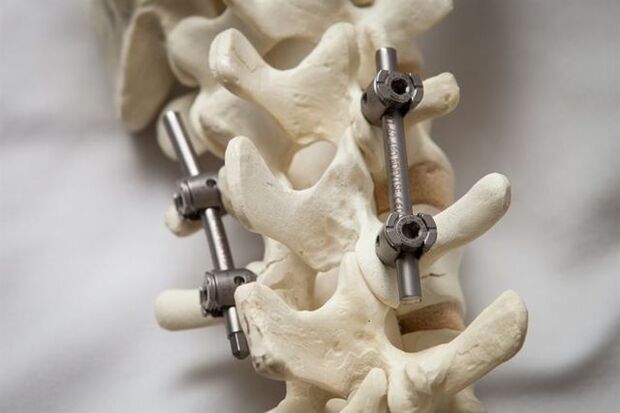
Treatment of third degree osteochondrosis is quite difficult. In this disease, the structure of the intervertebral discs changes.
The pathological process includes tissues and joints:
- The vertebral body is torn, there are characteristic signs of an intervertebral hernia. The person begins to experience severe pain in the back, neck, and limbs. Degenerative-dystrophic reactions affect a large part of the neck.
- Third-degree osteochondrosis of the cervical spine is characterized by vestibular disorders. From time to time a person feels pain in the temples. Some patients may be partially unconscious.
- The danger of the disease in the third stage is that it leads to endocrine pathology. Therapy includes surgery and the use of manual techniques. In the third stage of cervical osteochondrosis, drugs are not prescribed.
- The patient may have polysegmental osteochondrosis. In this disease, the segments of the cervical spine are affected, shoulder mobility is limited, and pain in the elbows occurs.
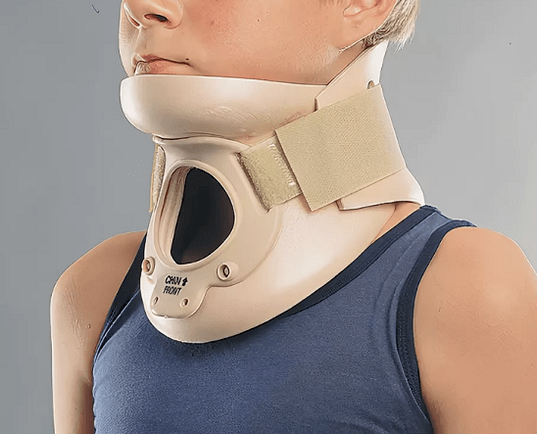
In order to restore the function of the spine, you need to wear a neck brace.
Disease syndromes
Cervical osteochondrosis is accompanied by syndromes:
- Vertebrae appear when cartilage and bone tissue are involved in the pathological process. The mobility of the neck is restricted. When a person tries to turn their head to one side, pain occurs in the back of the neck. The vertebrae are subject to morphological changes that are visible on the X-ray. The symptoms of a syndrome are interrelated. An important sign of the vertebral syndrome are morphological changes in the tissues and bone structures of the cartilage. This syndrome is difficult to diagnose. A similar complex of symptoms is present in myositis.
- Vertebral artery syndrome is another manifestation that can occur regardless of the degree of cervical osteochondrosis. The pathological process affects the arteries that supply the brain. From time to time there is a feeling of numbness. Dizziness is a symptom of vertebral artery syndrome. The blood pressure can jump, there is regularly nausea, vomiting. The nerve endings are irritated, for this reason a headache occurs. In vertebral artery syndrome, fainting and a lack of oxygen are possible. The disease is accompanied by the deposition of atherosclerotic plaques on the walls of blood vessels.
- Cardiac syndrome is characterized by pain in the sternum. Rapid fatigue and reduced performance are observed. The heartbeat becomes fast. Diagnostics include angiography and function tests. Radicular syndrome is associated with damage to the spinal nerves. It's one-sided. In radicular syndrome, neck pain is observed in combination with paralysis.
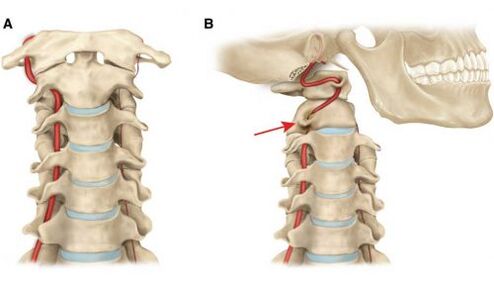
It should be noted that osteochondrosis leads to damage to a large number of vertebrae.
What is osteochondrosis of the chest region?
Osteochondrosis of the thoracic spine is found in young and old people: age does not matter. The pathology leads to degenerative-dystrophic changes in cartilage and bone structures. Late treatment leads to a violation of the structure of the ligaments, joints and intervertebral discs. At an advanced stage, thoracic osteochondrosis leads to the destruction of the intervertebral discs.
Complications of the disease can be:
- Pneumosclerosis;
- Infertility;
- vicious formations.
If the disease develops in a young person, then premature aging of the musculoskeletal system is observed. The function of cartilage structures and tissues is significantly impaired.
Clinical picture and causes
- With the development of this pathology, chest pain appears. They occur in a quiet position and while driving. Unpleasant sensations intensify after lifting weights, sharp turns.
- The disease manifests itself by squeezing in the back. This problem affects breathing.
- Chills can occur.
- Some people complain of peeling of the skin, thinning of the nail plate.
The disease is associated with pathological reactions in the intervertebral discs. It can be inherited. A predisposing factor is the defeat of the intervertebral discs. In some people, the disease is diagnosed against the background of osteophytes. The reason can be underdosed physical activity or, on the contrary, physical inactivity.
Therapeutic activities
In the absence of neurological symptoms, complex treatment is still required. The therapy cannot be postponed, otherwise the intervertebral discs will be destroyed.
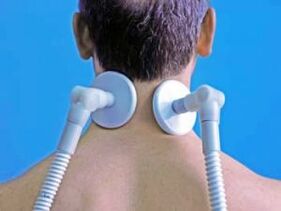
A diagnosis must be made before starting treatment. Once a person has identified at least one of the above symptoms, they need to see a neurologist. The doctor will take a medical history, probe the chest area. Palpation shows a herniated disc. If the doctor finds any, he will order an additional examination. X-ray required. The MRI procedure allows you to examine the musculoskeletal system and identify neoplasms.
Treatment depends on the degree of breast osteochondrosis and begins after the diagnosis is confirmed. The doctor prescribes drugs that relieve pain and restore the functioning of the musculoskeletal system. For the treatment of this pathology, injections, physical therapy and physical therapy exercises are required. Additional procedures - magnetic therapy, vacuum therapy, physical therapy exercises.
Daily exercise has a complex effect on the body, improves the functioning of the musculoskeletal system and respiratory system. Massage reduces the severity of pain, increases muscle tone, relieves fatigue and improves blood flow to tissues. The procedure is carried out by an experienced specialist.
diploma
How many years can you live with osteochondrosis of the cervical and thoracic spine? The pathology is not life-threatening, but its symptoms cause severe discomfort. The clinical picture of the disease can change: it all depends on the effectiveness of therapy.
















































